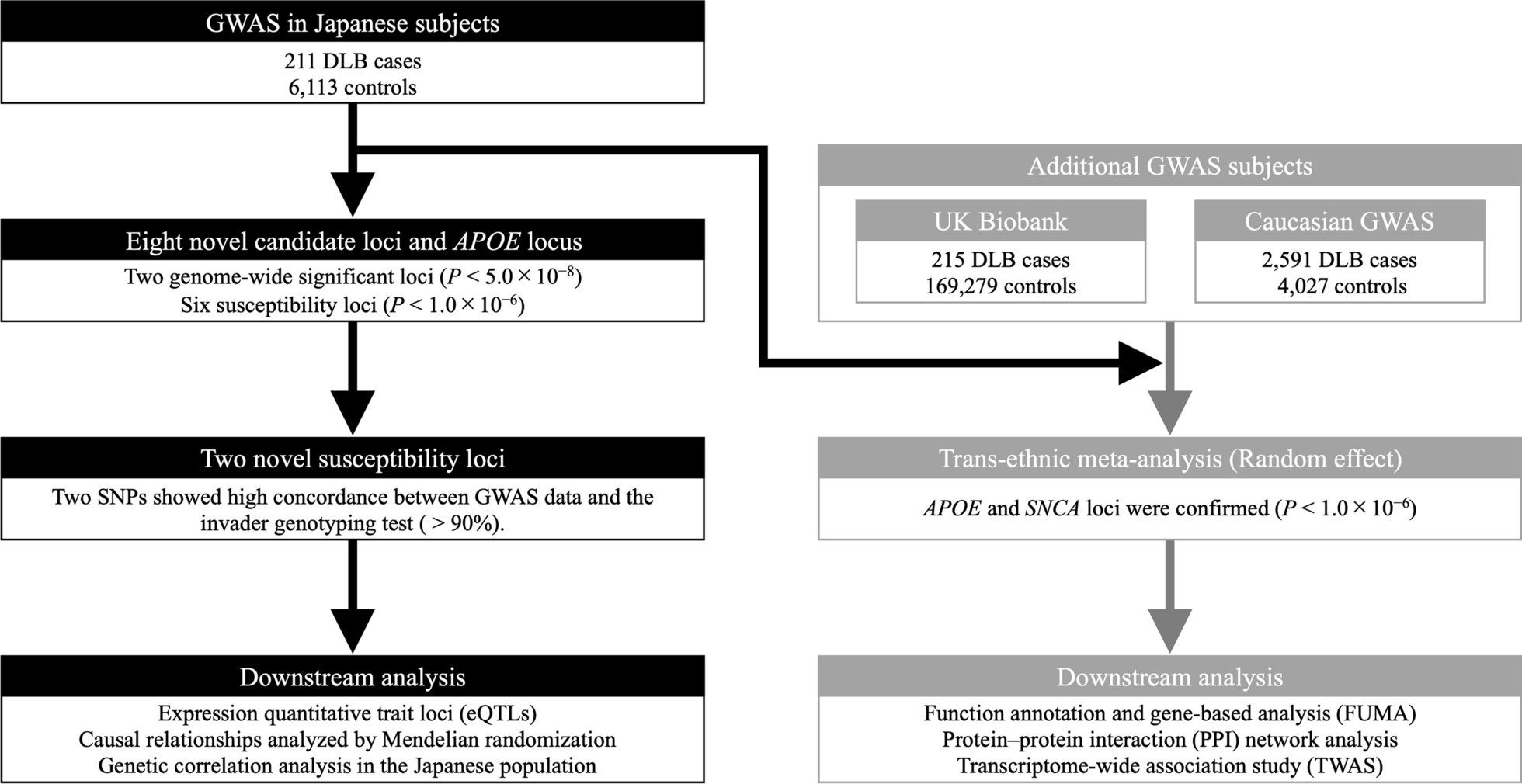2025-03-06 国立長寿医療研究センター
<関連情報>
- https://www.ncgg.go.jp/ri/report/20250306.html
- https://www.ncgg.go.jp/ri/report/documents/250306_press.pdf
- https://molmed.biomedcentral.com/articles/10.1186/s10020-025-01115-7
日本人のレビー小体型認知症遺伝子座がゲノムワイド関連研究により同定される A genome-wide association study identifies a novel East Asian–specific locus for dementia with Lewy bodies in Japanese subjects
Risa Mitsumori,Yuya Asanomi,Takashi Morizono,Daichi Shigemizu,Shumpei Niida & Kouichi Ozaki
Molecular Medicine Published:06 March 2025
DOI:https://doi.org/10.1186/s10020-025-01115-7

Abstract
Background
Dementia with Lewy bodies (DLB) is the second most common type of degenerative dementia in older patients. As with other multifactorial diseases, the pathogenesis results from interactions of environmental and genetic factors. The genetic basis of DLB is not yet fully understood. Recent genomic analyses of DLB in Caucasian cohorts identified genetic susceptibility loci for DLB, but the comprehensive genomic analysis in Asians was still not performed.
Methods
We conducted a genome-wide association study (GWAS) in Japanese subjects (211 DLB cases and 6113 controls) to clarify the genetic architecture of DLB pathogenesis.
Results
We identified the East Asian–specific DHTKD1 locus (rs138587229) on chromosome 10 with genome-wide significance (GWS; P = 3.27× 10–8) and the ICOS/PARD3B locus on chromosome 2 with suggestive significance (P = 3.95 × 10–7) as novel DLB genetic risk loci. We also confirmed the APOE locus (rs429358, P < 5.0 × 10–8), a known risk locus for DLB and Alzheimer’s disease in Caucasians. The DHTKD1 locus was associated with the gene expression of SEC61A2 and showed a causal relationship with cholinesterase levels. In a trans-ethnic meta-analysis that included Japanese, UK Biobank, and other Caucasian GWAS, we confirmed the risk for DLB at APOE and SNCA loci with GWS. Transcriptome-wide association analysis identified ZNF155 and ZNF284 in the brain cortex and GPRIN3 in the substantia nigra as putative causal genes for DLB.
Conclusions
This is the first GWAS for DLB in East Asians, and our findings provide new biological and clinical insights into the pathogenesis of DLB.

